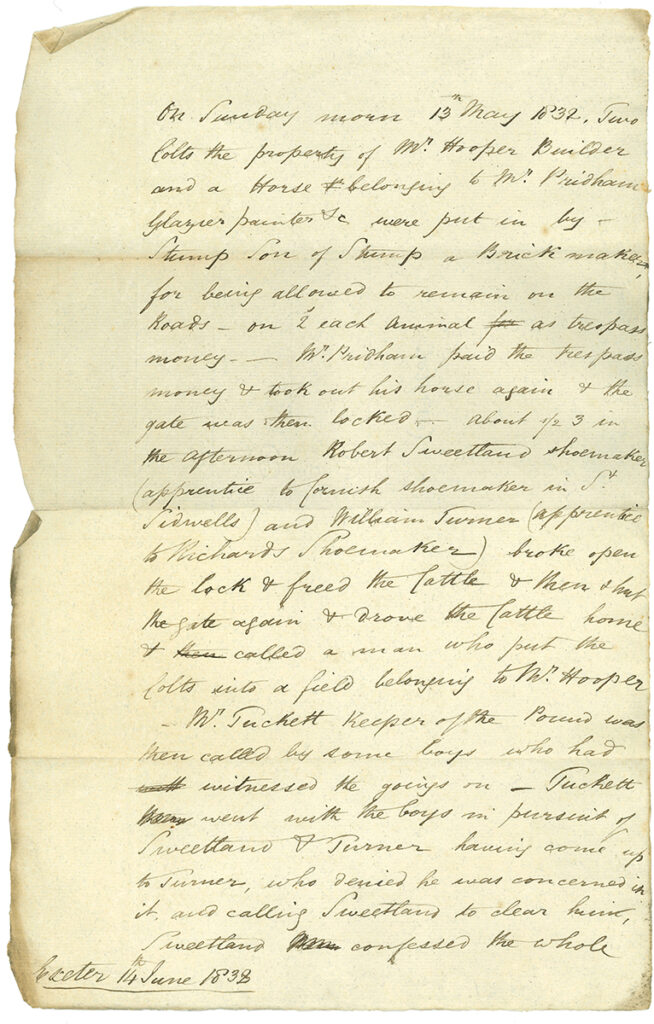 By Ellie Jones, Cathedral Archivist
By Ellie Jones, Cathedral Archivist
Each year, around the time of St Sidwell’s day (2 August) we like to focus on one of the many documents in the Cathedral Archives which records the fascinating history of the part of Exeter which bears her name.
This letter, dated 14 June 1832, concerns the St Sidwell manor pound. The pound which was known in the 17th century as the “strayer park”, was where stray animals in the area were held until a fine was paid for their release. The pound had to be rebuilt and repaired at Chapter expense multiple times throughout the 17th to 19th centuries. In 1823 it was relocated as a result of the Exeter’s Improvement Commissioners’ plans to widen some of the roads. The pound moved a short distance from a location near St Anne’s chapel at the junction of Sidwell Street, Old Tiverton Road and Blackboy Road, to “a waste spot adjoining Coombe’s field bounded by the Old Tiverton Road and Blackboy Lane”. The lessees of the original site were to build an improved stable there “to prevent the same being any nuisance or obstruction to any future plan of building on Coombe’s field”. Mr Hooper, the builder, was paid £17 11s 6d for the work.
A few years later, on the morning of Sunday 13 May 1832, an incident occurred involving two of Mr Hooper’s horses. Mr Tuckett, the keeper of the pound, reported that “Two Colts the property of Mr Hooper Builder and a Horse belonging to Mr Pridham Glazier painter etc. were put in by Stump Son of Stump a Brickmaker for being allowed to remain on the Roads – on 2s each animal as trespass money”. The fine was paid by Mr Pridham, who removed his horse and the gate was duly locked. Then, at about 3.30pm two apprentices (allegedly) opened the gate. “Robert Sweetland shoemaker (apprentice to Cornish shoemaker in St Sidwell’s) and William Turner (apprentice to Richards shoemaker) broke open the lock and freed the Cattle and then shut the gate again and drove the Cattle home and called a man who put the Colts into a field belonging to Mr Hooper.” Tuckett, with some boys who had witnessed the “goings on” pursued Sweetland and Turner. Turner denied involvement, but Sweetland confessed all.